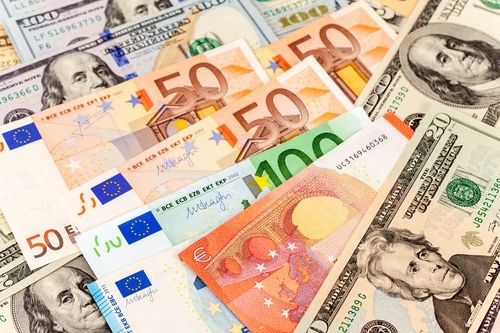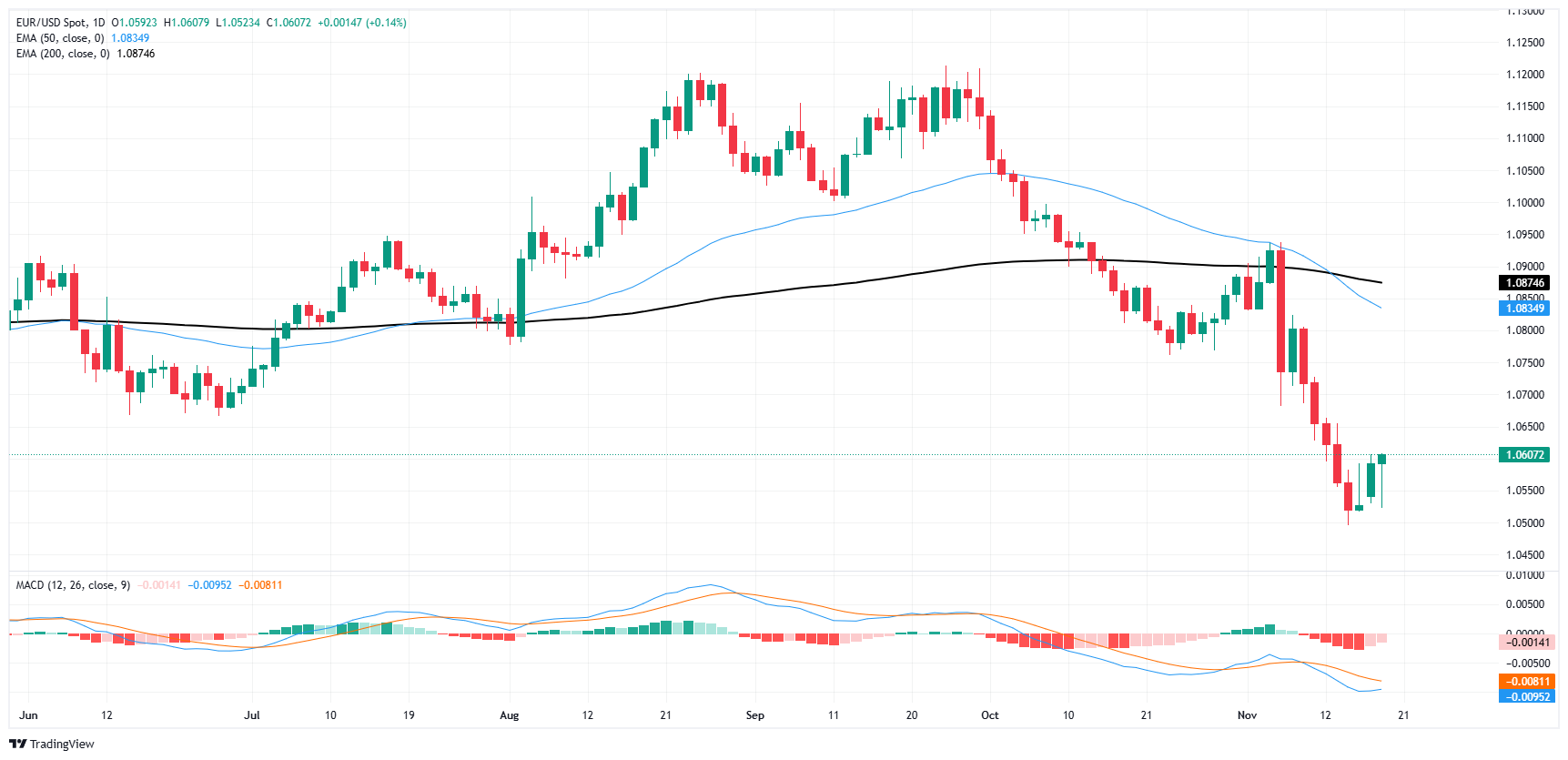
EUR/USD spiraled between key levels on Tuesday as momentum remains limited.
Fiber is looking to stage a recovery back above the 1.0600 handle, but headwinds remain.
A lack of key momentum-driving data is hobbling bullish momentum opportunities.
EUR/USD chewed through chart paper between 1.0550 and 1.0600 levels on Tuesday, testing into the low side but staging a recovery to add a thin 0.14% on the day. Final pan-EU Harmonized Index of Consumer Prices (HICP) inflation figures did little to galvanize Fiber traders in either direction, and Greenback markets have to settle for a thin release schedule this week.
Headline HICP inflation in Europe held at a perfectly-even 2.0% YoY in October, matching preliminary figures. The data point was a non-starter in Euro markets, sparking little interest on either side of the bid-ask spread. US data remains muted until the latter half of the trading week brings unemployment claims and Retail Sales figures.
ECB President Lagarde appears on Wednesday to deliver the opening remarks at the ECB’s Conference on Financial Stability and Macroprudential Policy. The ECB is currently caught between a rock and a hard place as European inflation continues to hold stickier than European policymakers had initially expected, and the broader European economy continues to tilt lopsided.
US economic data releases remain thin in the front half of the trading week. Mid-tier Initial Jobless Claims are due on Thursday, and expected to show a slight uptick in the number of new unemployment benefits seekers for the week ended November 15. US S&P Purchasing Managers Index (PMI) activity figures will be the number to watch this week, but won’t be dropping on investors until Friday.
EUR/USD price forecast
EUR/USD has backslid nearly 6.5% top-to-bottom from September’s peak just above 1.1200, bottoming out near the 1.0500 handle before an anemic recovery into 1.0600. Despite a near-term upswing, Fiber remains staunchly in bear country, with price action trading well below the 200-day Exponential Moving Average (EMA) near 1.0900.
A swell of bearish momentum in recent weeks has kicked the 50-day EMA below the long-run moving average, and is now poised for a decline into 1.0800. If the current bullish play runs out of steam, both buyers and sellers should expect that to occur somewhere near the still-falling 50-day EMA.
EUR/USD daily chart
Euro FAQs
The Euro is the currency for the 19 European Union countries that belong to the Eurozone. It is the second most heavily traded currency in the world behind the US Dollar. In 2022, it accounted for 31% of all foreign exchange transactions, with an average daily turnover of over $2.2 trillion a day. EUR/USD is the most heavily traded currency pair in the world, accounting for an estimated 30% off all transactions, followed by EUR/JPY (4%), EUR/GBP (3%) and EUR/AUD (2%).
The European Central Bank (ECB) in Frankfurt, Germany, is the reserve bank for the Eurozone. The ECB sets interest rates and manages monetary policy. The ECB’s primary mandate is to maintain price stability, which means either controlling inflation or stimulating growth. Its primary tool is the raising or lowering of interest rates. Relatively high interest rates – or the expectation of higher rates – will usually benefit the Euro and vice versa. The ECB Governing Council makes monetary policy decisions at meetings held eight times a year. Decisions are made by heads of the Eurozone national banks and six permanent members, including the President of the ECB, Christine Lagarde.
Eurozone inflation data, measured by the Harmonized Index of Consumer Prices (HICP), is an important econometric for the Euro. If inflation rises more than expected, especially if above the ECB’s 2% target, it obliges the ECB to raise interest rates to bring it back under control. Relatively high interest rates compared to its counterparts will usually benefit the Euro, as it makes the region more attractive as a place for global investors to park their money.
Data releases gauge the health of the economy and can impact on the Euro. Indicators such as GDP, Manufacturing and Services PMIs, employment, and consumer sentiment surveys can all influence the direction of the single currency. A strong economy is good for the Euro. Not only does it attract more foreign investment but it may encourage the ECB to put up interest rates, which will directly strengthen the Euro. Otherwise, if economic data is weak, the Euro is likely to fall. Economic data for the four largest economies in the euro area (Germany, France, Italy and Spain) are especially significant, as they account for 75% of the Eurozone’s economy.
Another significant data release for the Euro is the Trade Balance. This indicator measures the difference between what a country earns from its exports and what it spends on imports over a given period. If a country produces highly sought after exports then its currency will gain in value purely from the extra demand created from foreign buyers seeking to purchase these goods. Therefore, a positive net Trade Balance strengthens a currency and vice versa for a negative balance.
* The content presented above, whether from a third party or not, is considered as general advice only. This article should not be construed as containing investment advice, investment recommendations, an offer of or solicitation for any transactions in financial instruments.


